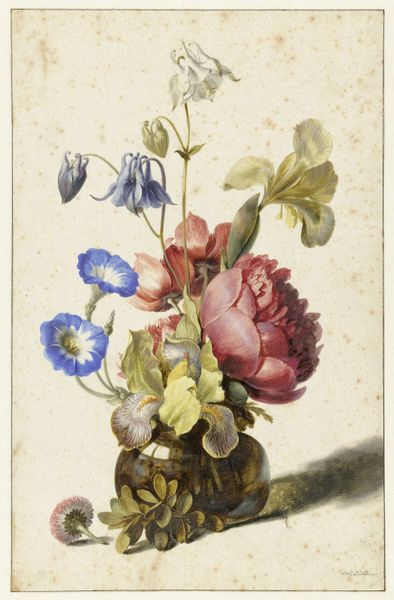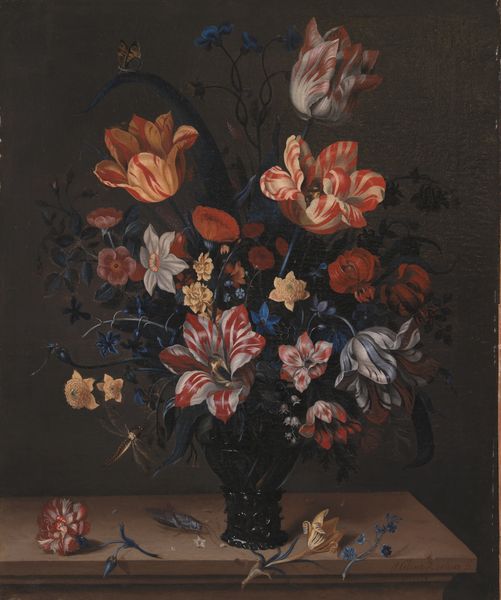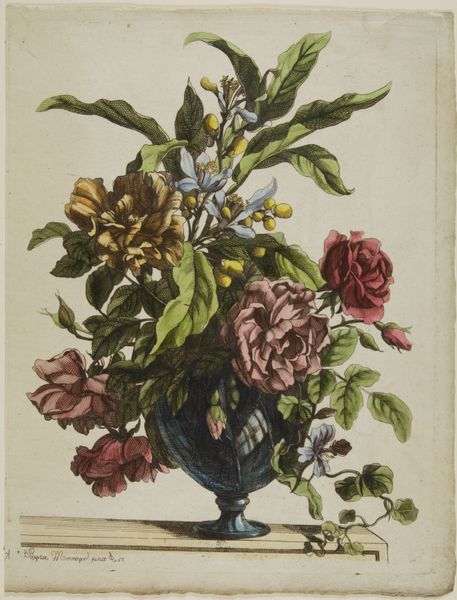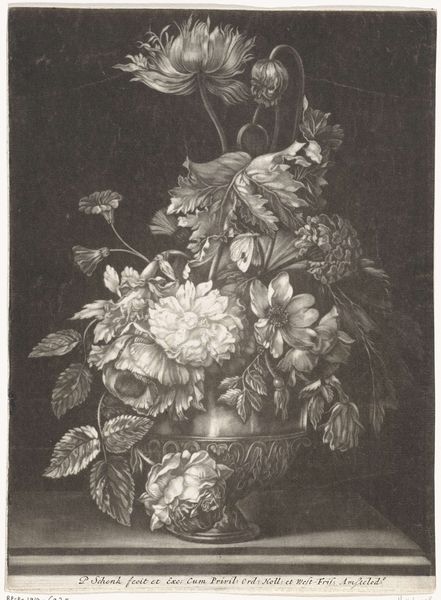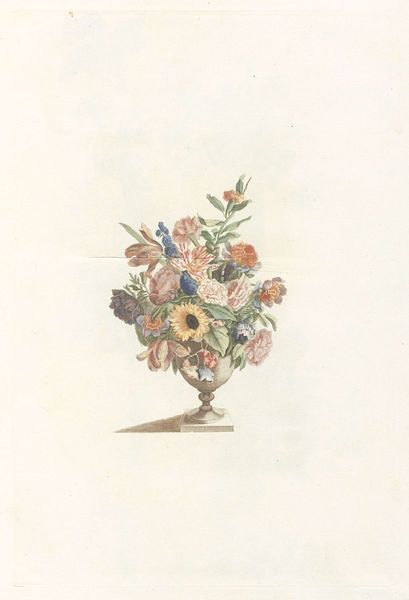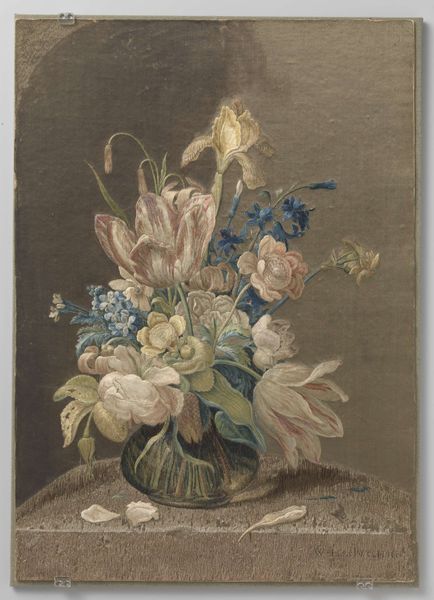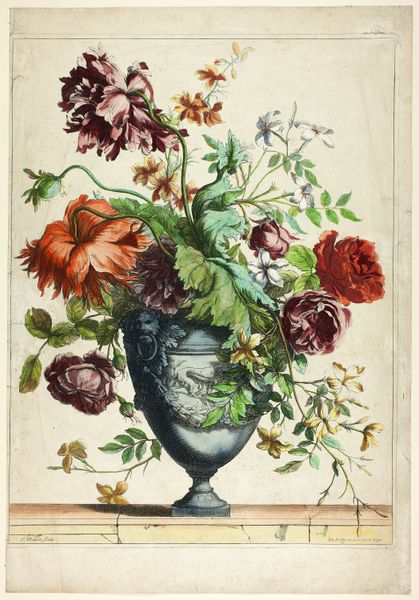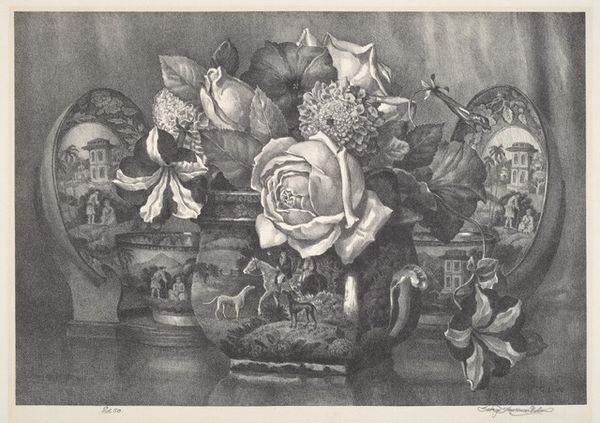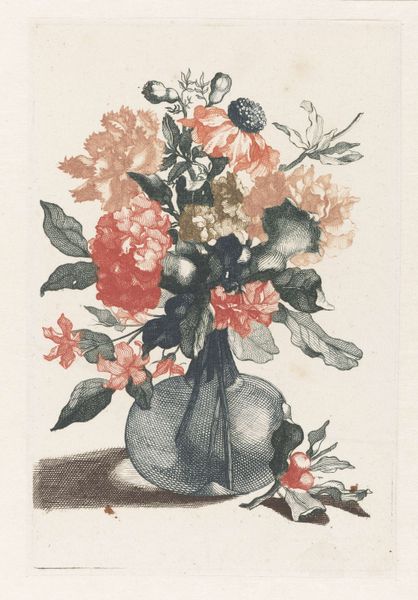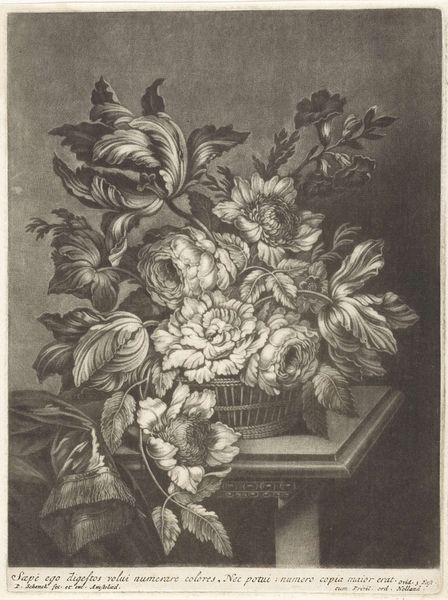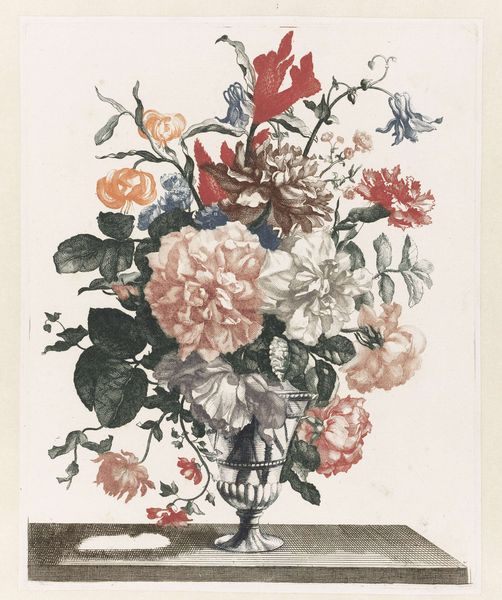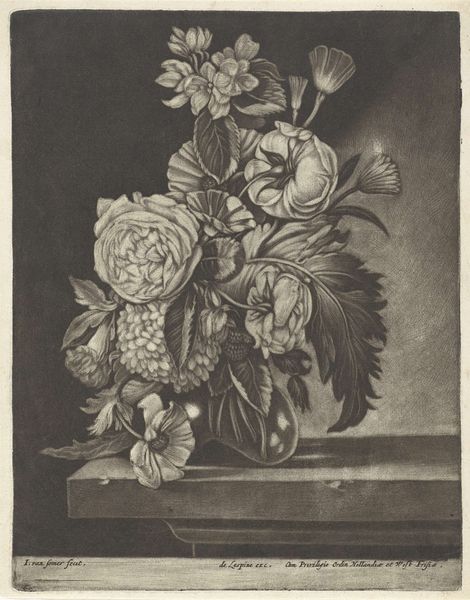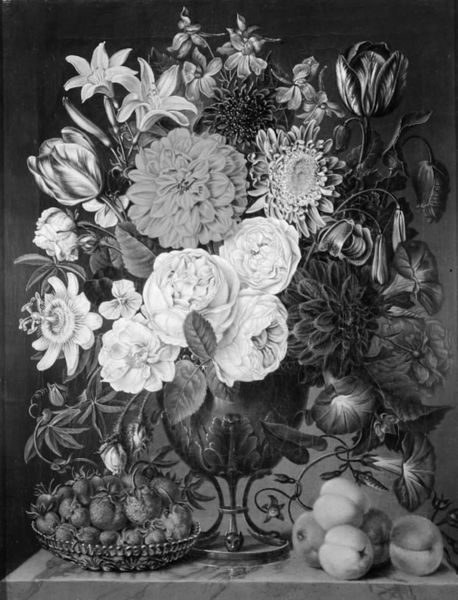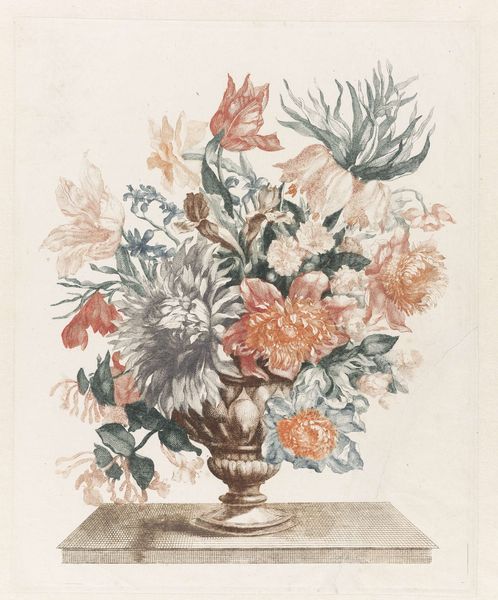
oil-paint, photography, impasto
#
portrait
#
still-life
#
oil-paint
#
photography
#
oil painting
#
impasto
#
romanticism
Copyright: Public domain
Editor: "Stilleven Met Rozen, Handschoenen En Waaier" – Still Life with Roses, Gloves and Fan – it looks like it’s by Helen Augusta Hamburger. It’s striking how intimate and almost theatrical this arrangement feels. What's your perspective on this kind of still life, with these very personal objects on display? Curator: The objects depicted - roses, gloves, a fan - invite us to consider the cultural construction of femininity in the era it was created, don't you think? Editor: In what way? Curator: The arrangement of these objects reflects more than just a decorative scene. How would the message change if we included some masculine objects such as tools? The roses might symbolise beauty, and the gloves and fan a degree of societal artifice that framed women's lives. Consider also that photography, even when portraying paintings of items such as these, was gaining prominence at this time. Do you think this may affect how the artwork gets presented to the public? Editor: That's an interesting question, definitely a key detail. What do you think was the impact of photography back then, especially on the art world and the public? Curator: Photography influenced not only the style, but also the perception and popularization of still lifes such as this. How do socio-political forces, like a burgeoning middle class desiring access to cultural symbols, contribute to the proliferation of artwork, and art reproduction through photographs? Editor: So it's not just a pretty picture; it's reflecting the times? Curator: Exactly! This image exists as a part of that time, actively shaped by it. A romantic snapshot but filtered through many perspectives. It serves as a glimpse into how those times saw themselves and maybe what they wanted others to see too. Editor: Fascinating, I hadn’t considered the societal influence in something that seems so simple. Curator: It reminds us that there's so much more to a painting beyond its surface. We are both its present audience and part of a never ending process of image production, viewing, consumption and dissemination.
Comments
No comments
Be the first to comment and join the conversation on the ultimate creative platform.
